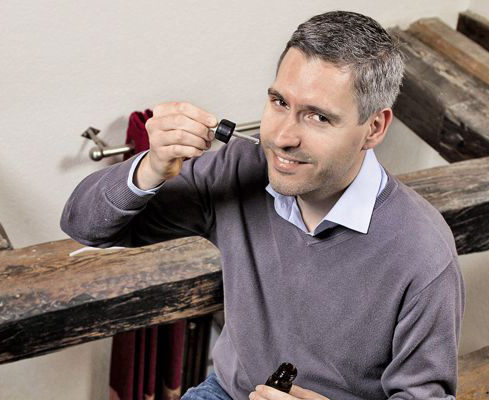
“Olfactory molecules in wine, understanding them and their impact”.
Neurophysiological issues
- Inter-individual receptor arrangement
- Receiver-based detection of both quality and intensity
- A molecule can act on several receptors simultaneously
- Olfactory information processed in several brain areas
- Influenced by many parameters (taste, hunger, thirst, emotions, mood, sleep-wake cycle…).
- Personal references
Oenoflair classification
Les Parfums du Vin
The Oenoflair collection
Olfactory training
Importance
- molecules (defects, markers…)
- compositions (natural & synthetic)
Different memorization methods
- Repeat
- Mutlimodality
- Transfer to long-term memory
Olfactory progression
- Wines
- Flavored wines
- Pure scents
One molecule among many in hydro-nitrogen stress
Causes
Water deficiency + nitrogen
Correlated measurement
Formaldehyde index
min 10 (140 mg/l assimilable nitrogen)
One of the main markers
Aminoacetophenone (AAP)
Hydro-nitrogen stress
Typical odors
- naphthalene – acacia flower
- encaustic – hawthorn
- beeswax – dirty damp linen
In the mouth
- Bitter
- Astringency
- Retroolfaction (= nose)
Olfactory methodology
- Blind nose & mouth tasting of naturally stressed wines
- Tasting (nose and mouth) of neutral wines with PAA added at different concentrations
- Tasting (nose and mouth) of water with PAA added at different concentrations
- PAA illumination on wet wipes at different concentrations
- After a break, naturally stressed wines are back in action
